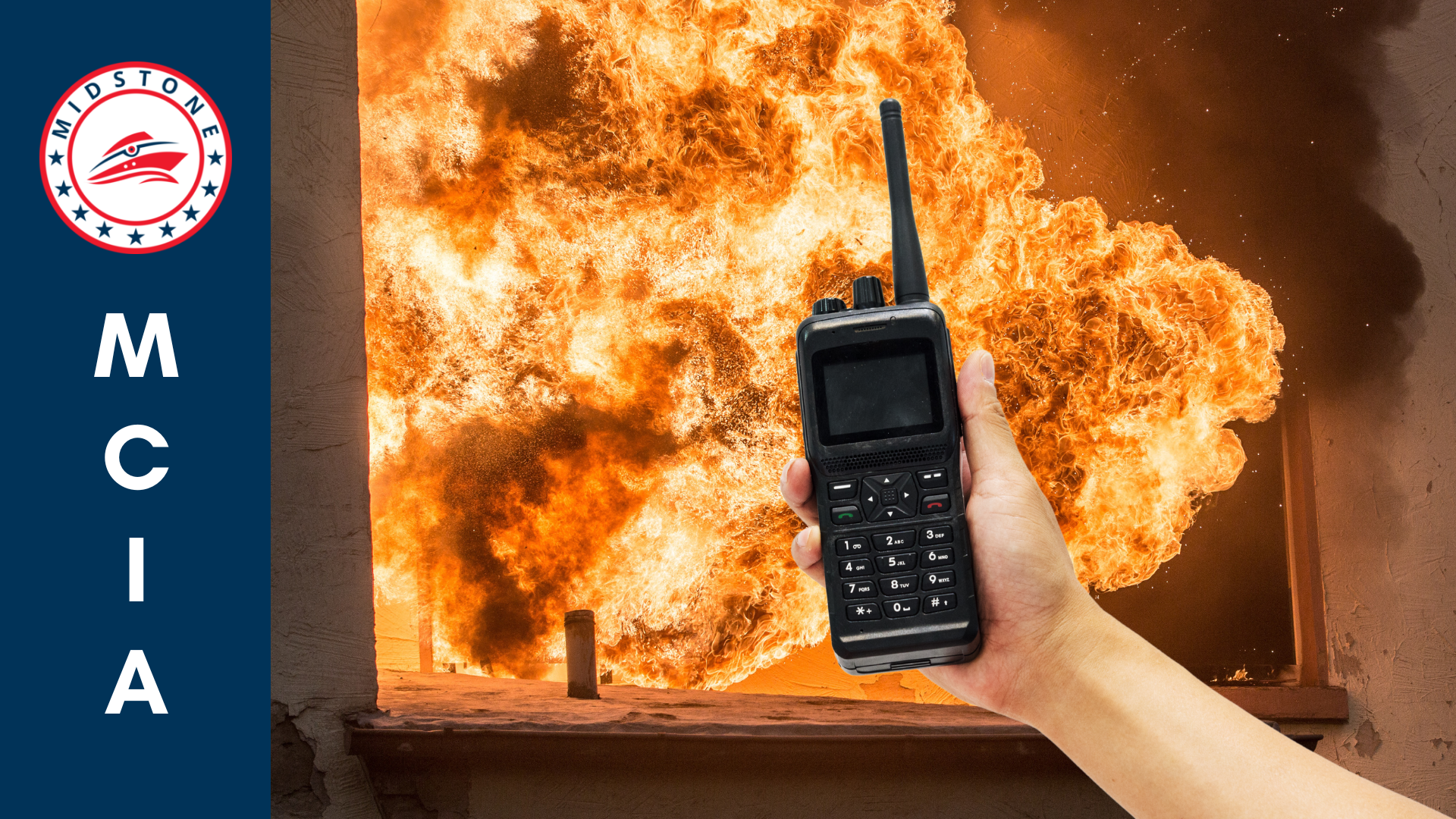
Prologue
On 17 September 2024, at around 6:00 PM IST, an eerie phenomenon gripped Lebanon and Syria. Thousands of pagers suddenly exploded in the hands of unsuspecting users, causing widespread panic. The blasts left thousands injured, including Mojtaba Amani, the Iranian ambassador to Lebanon. Many of the injuries were gruesome, involving severed fingers, facial burns, and shattered eyes. The explosions primarily occurred in areas known to be strongholds of the Lebanese terror group Hezbollah. Chaos erupted across the streets as the blasts continued for nearly 30 minutes [1].
According to Lebanese political activist Tracy Chamoun, the pagers emitted unusual beeping sounds and error messages, drawing users closer. The moment they pressed a button, the device exploded [2]. As the world struggled to comprehend this unprecedented attack, another shock followed just 24 hours later.
At 7:30 PM IST on 18 September, a second wave of explosions erupted. This time, they came through handheld radios, once again targeting Hezbollah strongholds [3].
It didn’t take long for intelligence circles to identify Israel as the orchestrator of the operation. The method was chillingly sophisticated, weaponising everyday communication devices to eliminate terror operatives with surgical precision. However, the tactic sparked international outrage. Former CIA Director Leon Panetta went so far as to call it “a form of terrorism” [4].
Many raised concerns over the use of domestic and civilian equipment for military purposes, noting that it significantly increases the risk of civilian casualties. While critics condemned the deployment of such tactics as indiscriminate and reckless, history shows that Israel has long mastered the art of covert elimination, transforming ordinary objects into deadly weapons while maintaining astonishing precision.
In this brief paper, we will examine a few such operations where Israel weaponised commonly used items to target terrorists, as well as the dangers posed when these technologies are turned against their originators.
The Book That Exploded
As early as 1956, the Chief of the General Staff of the Israeli Defence Forces (IDF), Moshe Dayan, ordered Unit 504 of Israeli Military Intelligence (AMAN) to eliminate two Egyptian Army colonels: Mustafa Hafez in the Gaza Strip and Salah Mustafa, the Egyptian military attaché in Jordan. Both were responsible for dispatching trained Palestinian operatives into Israel to carry out attacks on Israeli civilians.
To execute the plan, Israeli operatives used an unsuspecting informant, Muhammad al-Talalqa. They concealed explosives inside an Israeli Army cipher book and instructed al-Talalqa to deliver it to Mustafa Hafez. When the colonel opened the book, he was instantly killed in the explosion.
Meanwhile, in Jordan, Colonel Salah Mustafa received a similarly rigged copy of Achtung Panzer, a book authored by German General Heinz Guderian. The result was identical [5].
In both cases, no one other than the intended target was harmed, not even those who carried or delivered the devices. This marked the beginning of Israel’s use of civilian materials for lethal purposes, a tactic that has only expanded with time.
The Bed That Exploded
The Black September terrorist organisation was notoriously known for the 1972 Munich massacre. Hussein Abad Al Chir served as the head of Black September’s operations in Cyprus. When Israel’s foreign intelligence agency, the Mossad, launched Operation Wrath of God to hunt down those responsible for the Munich attack, Al Chir was added to their list.
In fact, Al Chir had been under Mossad surveillance even before Munich, due to his role in maintaining contact with the Soviet intelligence agency, the KGB. Once officially marked for elimination, Mossad operatives identified that Al Chir regularly stayed at the Olympic Hotel in Cyprus. During one of his absences, agents entered his hotel room and rigged his bed with explosives fitted with a pressure trigger. On 24 January 1973, as Al Chir went to sleep, Mossad remotely issued the detonation command [6].
Months later, on 11 April 1973, Al Chir’s replacement, Zaiad Muchasi, met a similar fate in his Athens hotel room—killed by a bomb planted in his bed [7].
Even five decades later, in July 2024, Hamas leader Ismail Haniyeh met a similar end in his Tehran guesthouse, despite being under constant Iranian security protection. Though the specific details remain classified, the fate of the target, the precision of the operation, and the orchestrator mirrored those two incidents from 1973.
Remarkably, in all these cases, no innocent person was harmed.
The Phone That Exploded
In 1972, Mahmud Hamshari was the Palestinian Liberation Organization (PLO) representative in France. Israeli intelligence, however, identified him as the number-two figure in the leadership of Black September. His name was added to Mossad’s hit list for involvement in the Munich massacre.
Mossad operatives broke into Hamshari’s apartment and rigged the marble top of his telephone table with explosives, while he was lured away for a fake interview at a nearby café. When he later answered a call at home, the device detonated. Hamshari survived the initial blast but succumbed to his injuries on 9 January 1973 [8].
Twenty-five years later, Israeli intelligence successfully eliminated Yahya Ayyash, the infamous Hamas bomb-maker known as “The Engineer.” Agents swapped his mobile phone with a visually identical device embedded with 50 grams of RDX. An Israeli Air Force jet intercepted the signal from the phone and relayed it to Shin Bet headquarters, which then issued the remote detonation command [9].
Remarkably, both Mahmud Hamshari and Yahya Ayyash were eliminated without any collateral casualties.
The Brick That Exploded
Raed Mohammed Ra’if al-Karmi, one of the founding commanders of the Al-Aqsa Martyrs’ Brigade, regularly visited his mistress in Nablus during the afternoon, using the same footpath along the wall of the Nablus cemetery. Shin Bet operatives observed this routine and removed one of the brick-sized stones from the wall, replacing it with an identical stone rigged with explosives. On 14 January 2002, as al-Karmi passed the precise location where the device had been planted, Shin Bet remotely triggered the explosive, killing him instantly [10][11].
Once again, the Israeli operation demonstrated extraordinary precision, with no collateral casualties.
Conclusion: A Chosen Weapon, an Ethical Dilemma or a Security Nightmare
Following the pager blast operation, the then IDF Chief of Staff, Lt Gen Herzi Halevi, hinted at even more advanced capabilities yet to be deployed. He stated, “We have many capabilities that we have not yet activated” [12]. Given Israel’s reputation for covert operational expertise driven by technological superiority and surgical precision, his words were no exaggeration.
Yet the “Pager Blasts” of 2024 stretched the ethical limits of warfare. Unlike traditional targeted assassinations, thousands of devices exploded at once, with no confirmation of who was holding them. The risk of civilian casualties soared. Lebanese authorities later confirmed that 12 civilians, including two children, were among the dead [13]. This raises a critical question. As warfare becomes more advanced, can precision truly be guaranteed?
Beyond ethics, this kind of operation presents a serious challenge for security agencies across the world. The transformation of ordinary items like pagers, phones, books or bricks into deadly weapons signals a dangerous shift. With rapid technological spread, turning civilian tools into lethal weapons is no longer the sole domain of state intelligence agencies.
This is especially concerning for high-population nations like India, where Chinese companies dominate 75 percent of the smartphone market and control 77 percent of the surveillance camera infrastructure [14][15]. The consequences of this dependency are already visible. During a recent covert ISR mission along the Line of Control, the Indian Army lost control of its drones, which veered into Pakistani territory. Investigation later revealed that the drones had been hacked via embedded Chinese components [16]. Whether this was executed by Chinese operatives directly or enabled by Pakistani access remains unclear, but the implications are severe.
As countries race toward technological supremacy, especially in the domain of warfare, the line between innovation and vulnerability becomes thinner. The power to inflict damage is no longer stored in arsenals. It now lives in the devices we carry every day. The real question is no longer about who has the power, but who controls it.
__________________________________________________________________________________________________
END NOTES
- “The pager attacks continued for 30 minutes in Lebanon and Syria” https://www.jpost.com/breaking-news/article-820536
- “According to the Lebanese Political activist Tracy Chamoun pagers emitted a sound to encourage users to pick the devices up and lift them to their heads” https://www.bbc.com/news/live/cwyl9048gx8t
- “A second wave of explosions occurred in handheld radios again predominantly in areas known as Hezbollah strongholds next day the pager attack took place” https://www.theguardian.com/world/live/2024/sep/18/middle-east-crisis-live-hezbollah-pager-explosion-lebanon-irael-iran-latest-updates
- “Former CIA Director Leon Panetta deemed the pager attack as sort of a terror attack” https://www.jpost.com/breaking-news/article-821315
- Ronen Bergman (2018); Rise and Kill First. Page 48–49 https://books.google.co.in/books/about/Rise_and_Kill_First.html?id=CUm-uQEACAAJ&redir_esc=y
- Simon Reeve (2005); One Day in September. Page 183-185 https://books.google.co.in/books/about/One_Day_in_September.html?id=bKZa91YO_4YC&redir_esc=y
- Ibid, Page 198
- Ibid, Page 182
- Ronen Bergman (2018); Rise and Kill First. Page 309-325 https://books.google.co.in/books/about/Rise_and_Kill_First.html?id=CUm-uQEACAAJ&redir_esc=y
- Ibid, Page 369
- “The Killing of the Terrorist With Nine Lives Changed the Course of the Second Intifada” https://www.haaretz.com/israel-news/2020-09-29/ty-article/.premium/the-death-of-the-terrorist-with-nine-lives-changed-the-course-of-the-second-intifada/0000017f-da76-dea8-a77f-de763fdd0001
- “IDF chief says Israel has ‘many more capabilities’ to be used in war against Hezbollah” https://www.timesofisrael.com/liveblog_entry/idf-chief-says-israel-has-many-more-capabilities-to-be-used-in-war-against-hezbollah/
- “Lebanese authorities later confirmed 12 civilians, including two children, were among the dead” https://www.bbc.com/news/articles/cx2kn10xxldo
- “Chinese companies dominate 75% of the Indian smartphone market” https://www.moneycontrol.com/technology/chinese-smartphones-to-retain-dominance-in-india-despite-slower-volume-growth-in-2025-article-12911073.html
- “Chinese companies control 77% of the surveillance camera market” https://economictimes.indiatimes.com/industry/cons-products/electronics/chinese-companies-dominate-indian-home-surveillance-camera-mkt-in-2022-counterpoint/articleshow/98710740.cms?from=mdr
- “Indian Army lost control of its drones, which veered into Pakistani territory” https://www.indiatoday.in/magazine/defence/story/20250210-chinese-threat-in-indian-drones-2672839-2025-01-31
